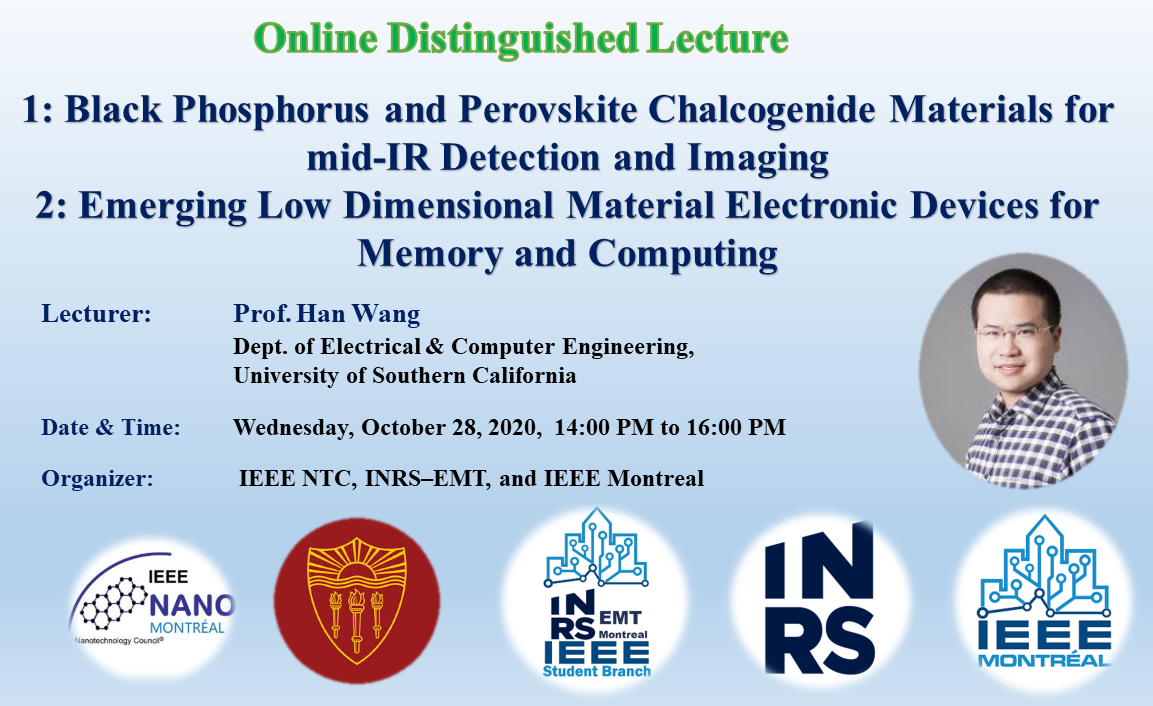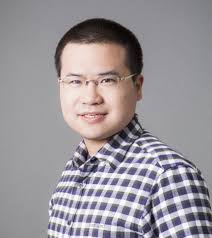1. Black Phosphorus and Perovskite Chalcogenide Materials for mid-IR Detection and Imaging 2. Emerging Low Dimensional Material Electronic Devices for Memory and Computing
Distinguished Lecture by IEEE-NTC

1. Recent progress in new narrow bandgap material discovery such as black phosphorus (BP) and perovskite chalcogenide materials including barium titanium sulfide (BaTiS3) open the door to a new generation of photonic materials for mid-infrared sensing and imaging. High mobility, narrow gap BP and BaTiS3 thin film have shown promising properties for mid-infrared and long wavelength infrared optoelectronics. Furthermore, their low-symmetry crystal structures allow for the realization of polarization sensitive electro-optical detection in the mid-infrared range. Here, I will present our work in understanding the fundamental electronic and optical properties of BP and BaTiS3, including using the scanning ultrafast electron microscopy technique to obtain spatial-temporal imaging of the real-time carrier dynamics. Our recent demonstration of polarization sensitive mid-IR detector and the development of mid-IR focal-plane array will also be presented. Technological potential and future impacts of these novel mid-IR materials and devices will be discussed.
2. Low dimensional materials offer a rich array of unique physical properties that are promising for developing a new generation of electronic devices beyond von-Neumann computing hardware. In this talk, I will discuss our recent work in developing atomically-thin resistive memory devices based on low dimensional materials that can achieve ultralow-power operation at the sub-femtojoule level. Our work on developing low dimensional material based phase transition oscillatory neuronal devices will also be discussed. Due to their atomically confined geometry, such oscillatory devices exhibit pronounced stochastic feature with dynamically tunable distribution parameters closely resembling biological neuron spiking. Furthermore, the demonstration of the low power hardware implementation of new computing schemes such as Boltzmann machine and stochastic Hopfield network based on these novel devices will be presented.
Date and Time
Location
Hosts
Registration
-
 Add Event to Calendar
Add Event to Calendar
- Contact Event Host
-
xin.liu@emt.inrs.ca, moein.noferesti@ieee.org
- Co-sponsored by IEEE-NTC
Speakers
 Prof. Han Wang of University of Southern California
Prof. Han Wang of University of Southern California
Biography:
Han Wang is an Associate Professor in the Department of Electrical and Computer Engineering at the University of Southern California and the holder of the Robert G. and Mary G Lane Early Career Chair. His research interests include the fundamental study and device innovation in electronics and photonics technology based on emerging nanomaterials
His work has been recognized with numerous awards including the IEEE Nanotechnology Council Early Career Award in 2019, the Army Research Office Young Investigator Award in 2018, the National Science Foundation CAREER award in 2017, USC Viterbi Junior Faculty Research Award in 2018, the IEEE International Electron Device Meeting (IEDM) Roger A. Haken Best Paper Award in 2012, Massachusetts Institute of Technology Jin-Au Kong Best Doctoral Thesis Award in 2013, and the Best Paper Award in International Conference on Compound Semiconductor Manufacturing Technology (CS MANTECH) in 2010.
The webinar will be done in Zoom.

